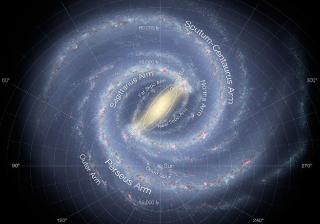Bibcode
Monguió, M.; Negueruela, I.; Marco, A.; González-Fernández, C.; Alonso-Santiago, J.; Costado, M. T.; Casamiquela, L.; López-Corredoira, M.; Molgó, J.; Vilardell, F.; Alfaro, E. J.; Antoja, T.; Figueras, F.; Garcia, M.; Jordi, C.; Romero-Gómez, M.
Referencia bibliográfica
Monthly Notices of the Royal Astronomical Society, Volume 466, Issue 3, p.3636-3647
Fecha de publicación:
4
2017
Número de citas
5
Número de citas referidas
5
Descripción
NGC 7067 is a young open cluster located in the direction between the
first and the second Galactic quadrants and close to the Perseus spiral
arm. This makes it useful for studies of the nature of the Milky Way
spiral arms. Strömgren photometry taken with the Wide Field Camera
at the Isaac Newton Telescope allowed us to compute individual physical
parameters for the observed stars and hence to derive the cluster's
physical parameters. Spectra from the 1.93-m telescope at the
Observatoire de Haute-Provence helped to check and improve the results.
We obtained photometry for 1233 stars, individual physical parameters
for 515 and spectra for 9 of them. The 139 selected cluster members lead
to a cluster distance of 4.4 ± 0.4 kpc, with an age below
log10(t(yr)) = 7.3 and a present mass of 1260 ± 160
M⊙. The morphology of the data reveals that the centre of
the cluster is at (α, δ) = (21: 24: 13.69, +48: 00: 39.2)
J2000, with a radius of 6.1 arcmin. Strömgren and spectroscopic
data allowed us to improve the previous parameters available for the
cluster in the literature.
Proyectos relacionados

Morfología y dinámica de la Vía Láctea
El Proyecto se estructura en dos partes, diferenciadas pero complementarias: morfología y dinámica. El estudio detallado de la morfología de la Vía Láctea pretende proveer una base de datos de distribución estelar en las regiones más alejadas y extintas de nuestra Galaxia, mediante el desarrollo de modelos semiempíricos a partir de la información
Martín
López Corredoira